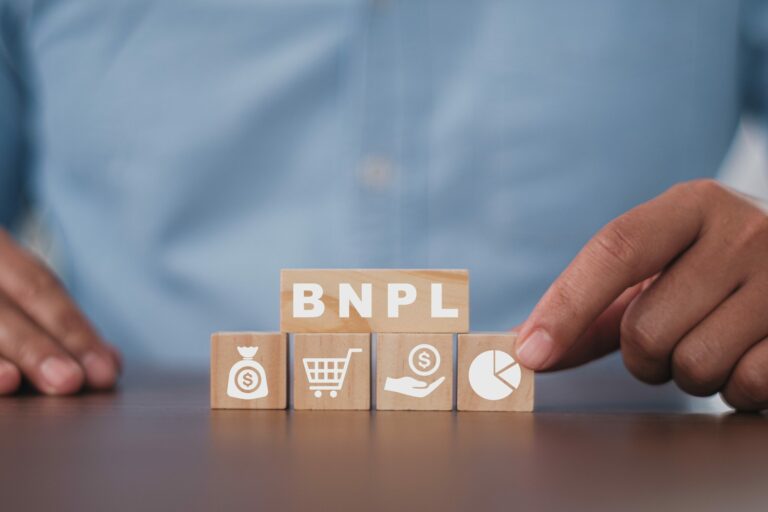Buy Now, Pay Later (BNPL) is on the rise. The growth of the online payment market is paving the way for existing BNPL suppliers and new entrants too. The question is whether you should opt for an existing solution or develop your own software.
BNPL solutions allow customers to instantly buy items online or in a store and pay for them over a specified period. This process is simplified as much as possible so that customers can access credit quickly and avoid a credit card’s high-interest rates. As a result, demand for Buy Now, Pay Later products are surging, and dedicated providers like Klarna, Afterpay, and Affirm have taken a share of the market and would seem like the logical choice when it comes to picking a partner for your BNPL solution. But big techs, such as Apple and Amazon, and large banks, such as Deutsche Bank, are also developing solutions. In addition, other companies are offering their own BNPL software, sometimes as a white-label version of an existing tool. But what are the pros and cons of the different options?
Proven quality
One of the major advantages of choosing an established player is that you’re all but guaranteed a certain level of quality and reliability. These providers have proven their effectiveness. They can be smoothly and quickly integrated into your physical or online trading platform, and you’ll have fewer worries about licensing and governance. As an entrepreneur, another plus is that you are freed up to focus on your core activities instead of spending your time resolving BNPL issues. After all, it’s an area that requires a considerable amount of technological know-how. Moreover, with the help of the necessary APIs, you can be up and running quickly without lengthy lead times and test phases.

Transaction fee and customer data
However, choosing an established BNPL solution also has its disadvantages. For example, there’s the transaction fee, which can be quite high. Another Achilles’ heel is branding. Shoppers shop at a specific store but then also become the BNPL provider’s customers. Equally important is data ownership. Owning customer data empowers merchants to better serve shoppers. When you choose an existing BNPL solution, you don’t own all the data collected during the purchasing process. This means your marketing and after-sales teams miss out on valuable data. In addition, there’s a risk that the provider will use that data to take advantage of opportunities with your competitors.
Personalised solutions don’t just happen
Building your own BNPL solution offers a remedy to these drawbacks. It gives you full control over the checkout data and allows you to customise the tool so it perfectly meets your needs, including acceptance rates and branding. And since you manage the entire process yourself, you don’t have to pay fees.
On the other hand, building a BNPL solution is a complicated process. It requires technical knowledge, workforce, and budget. Managing the credit risk is entirely your responsibility, and you’ll also have to obtain the necessary licenses. Developing your own service also means finding funding, and you’ll have to build up competencies in compliance, risk, and fraud prevention before launching.
Is hybrid the perfect compromise?
So, both options have advantages and disadvantages. However, you don’t necessarily have to choose one or the other. Hybrid solutions such as a white label approach or a customised BNPL solution —based on your specs and using existing architecture — combine the best of both worlds: the technical innovation and know-how of an established player, as well as control over your own data and the freedom of to tailor the solution to your needs.
If you want to delve further, do not hesitate to download our latest whitepaper, where we take a closer look at the subject.

